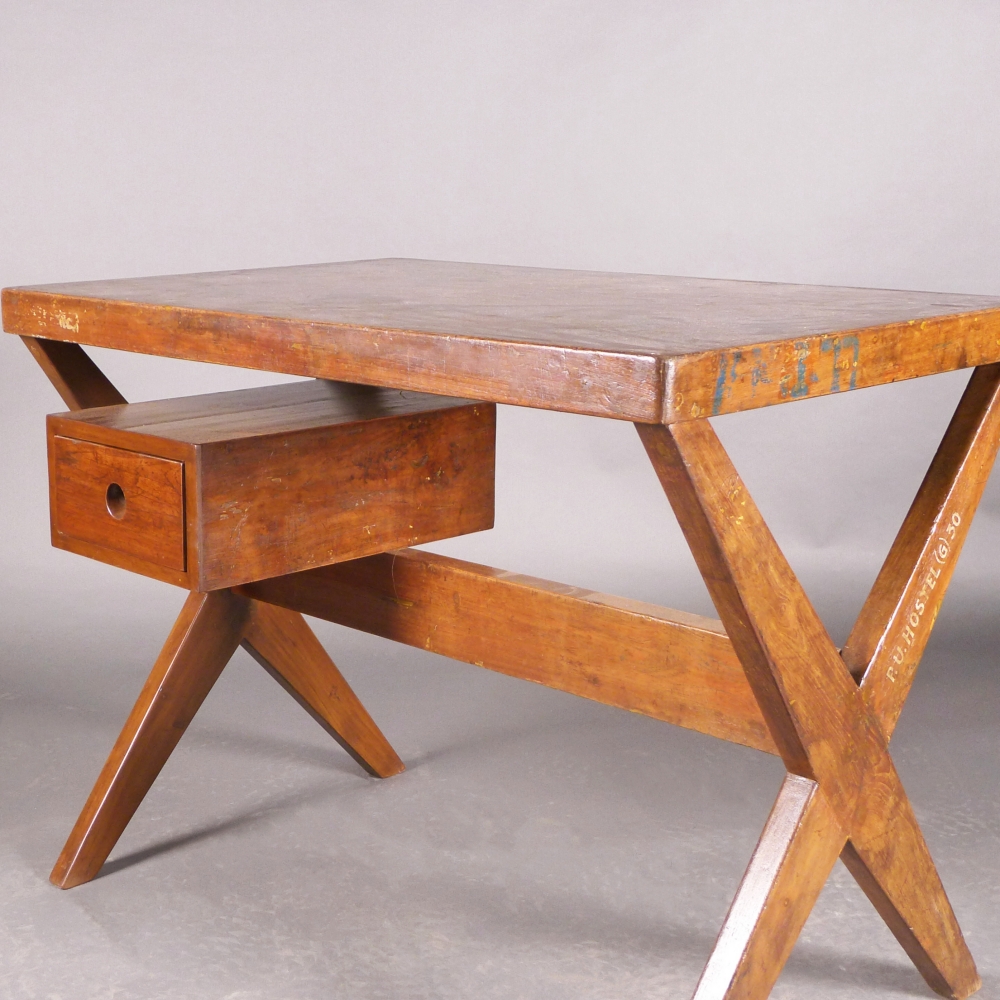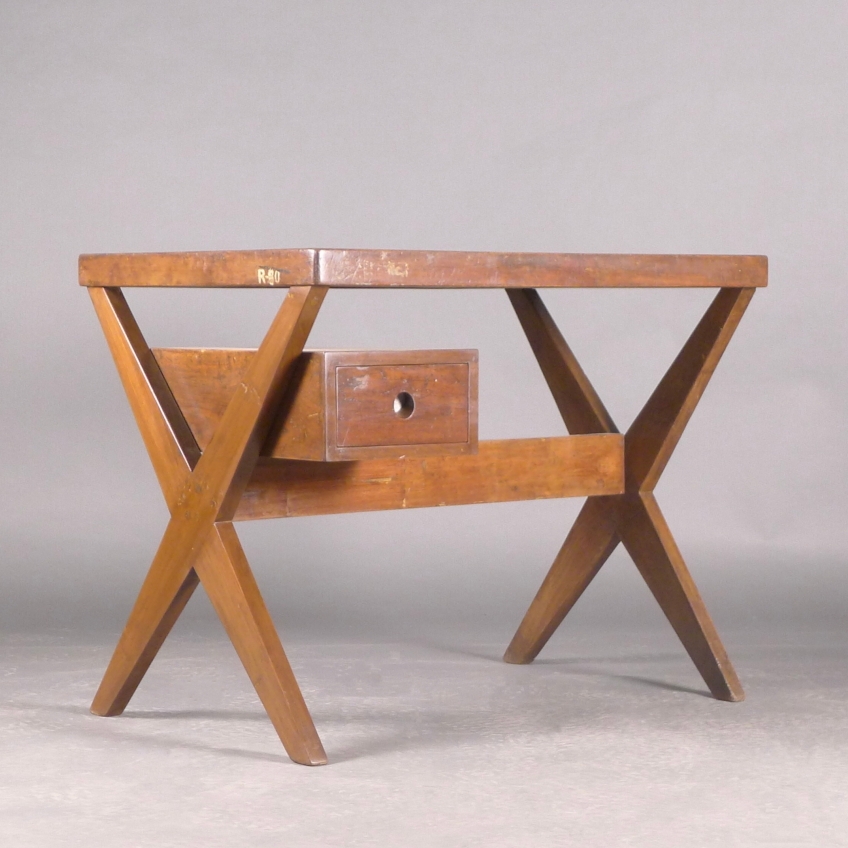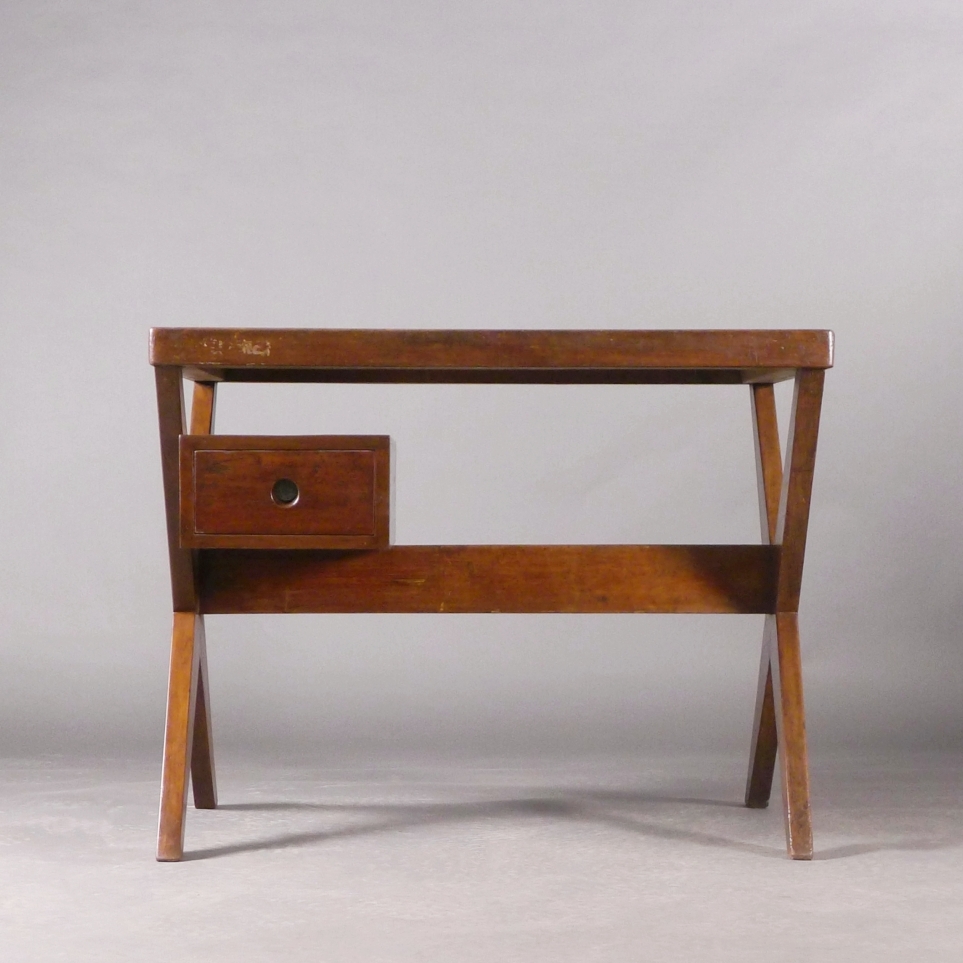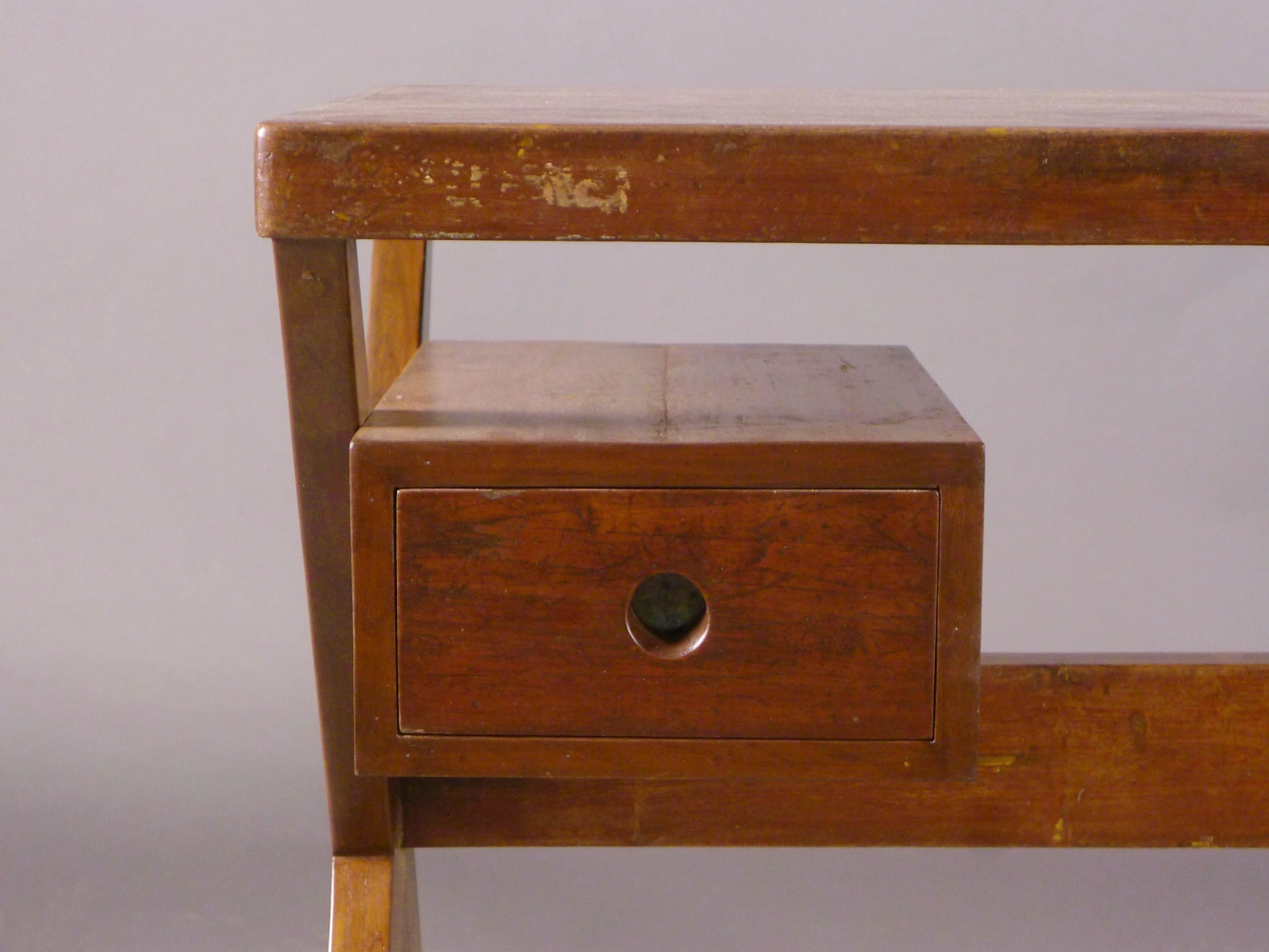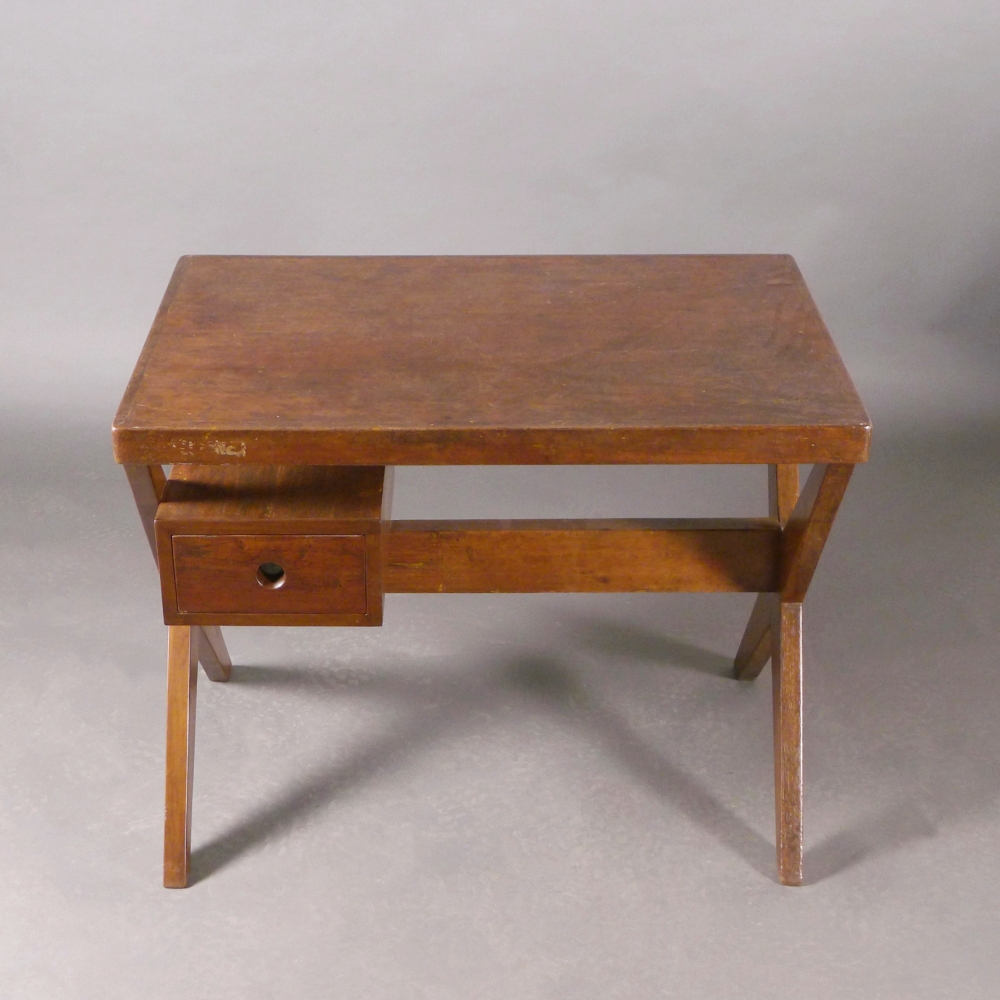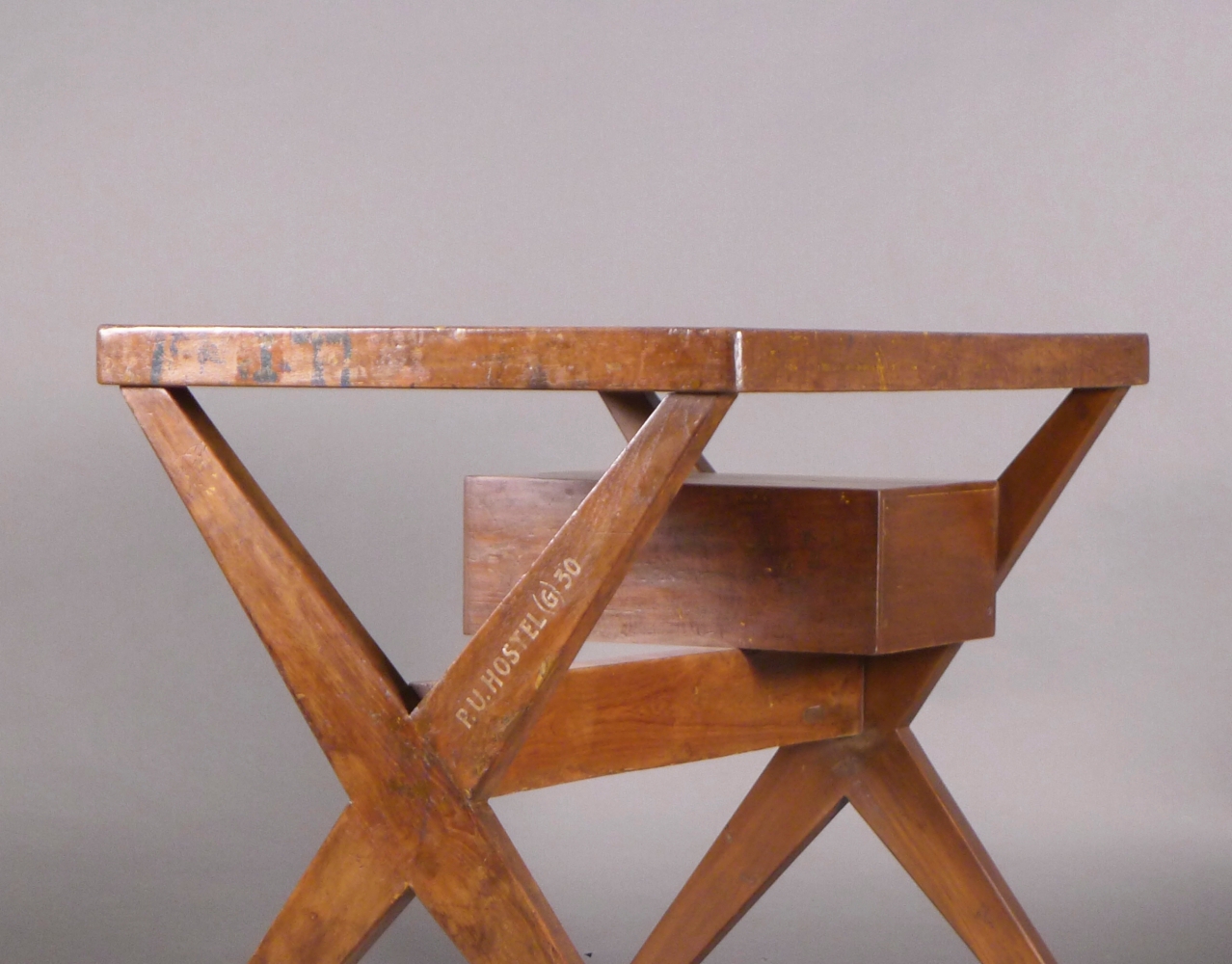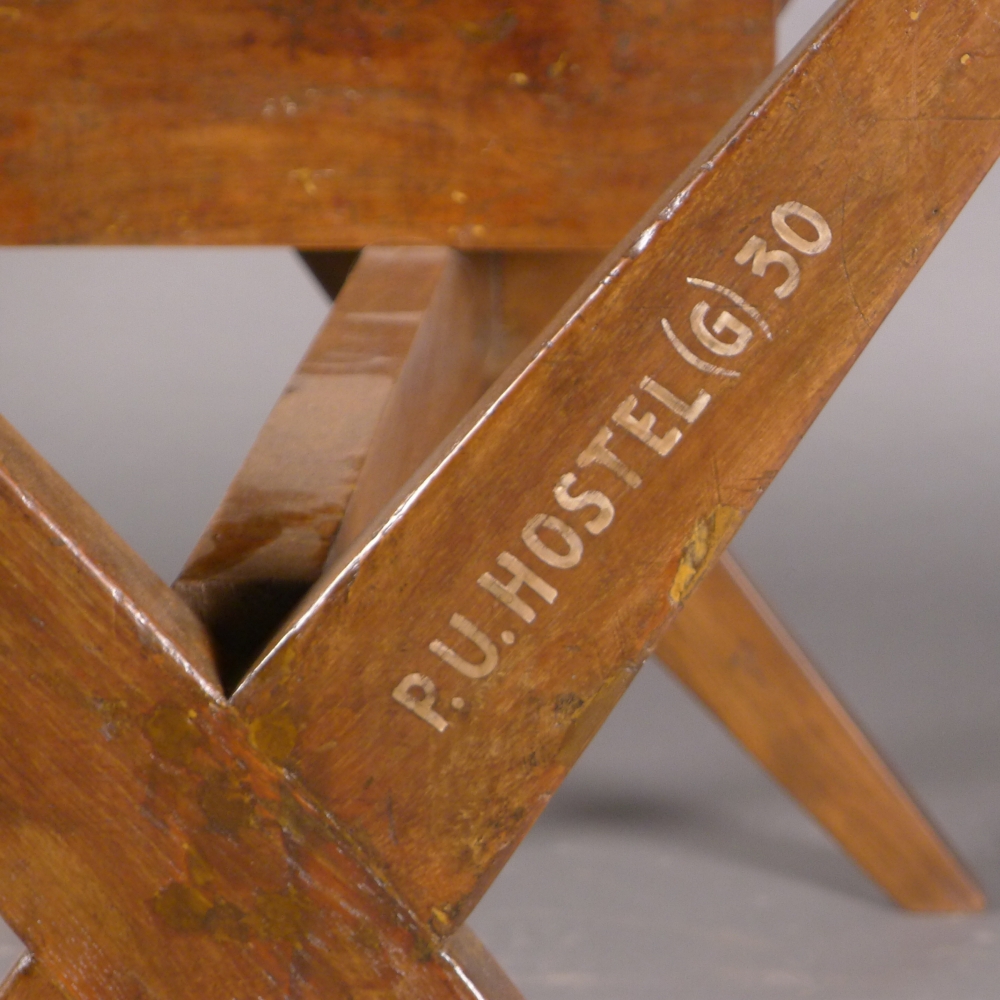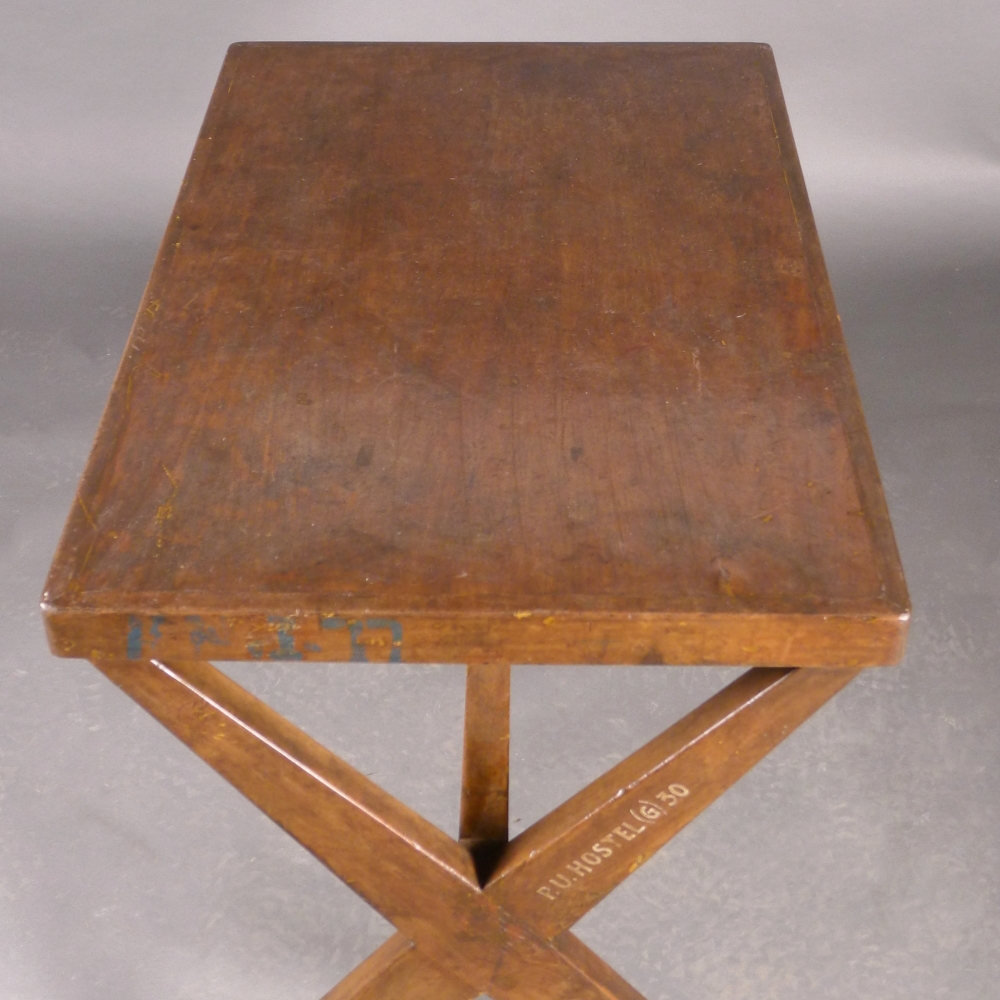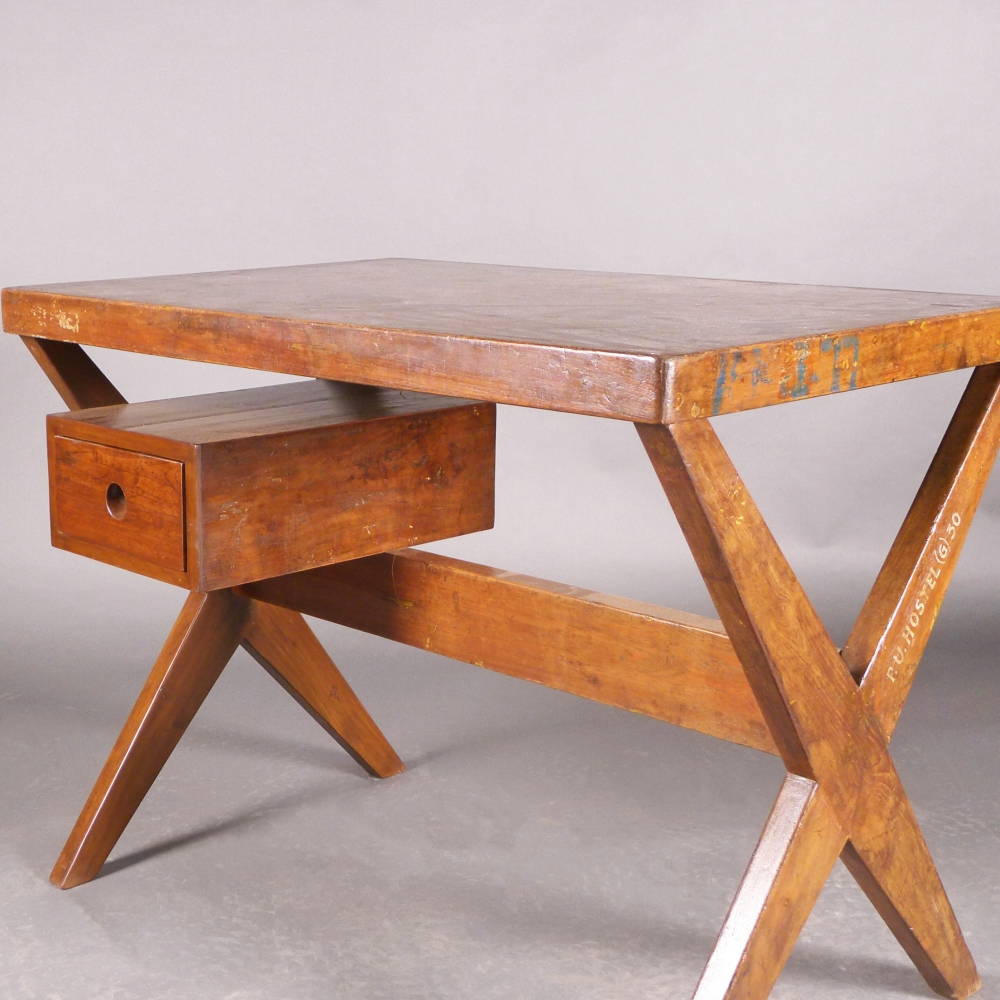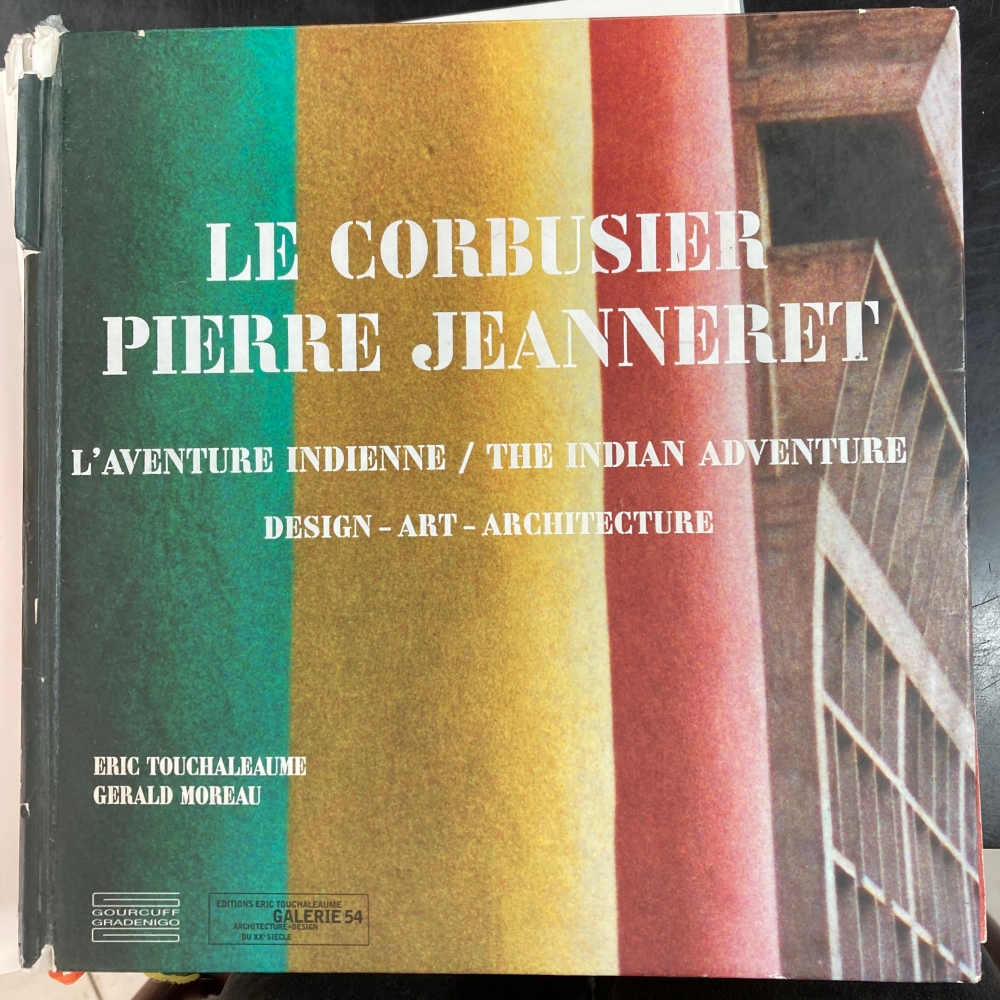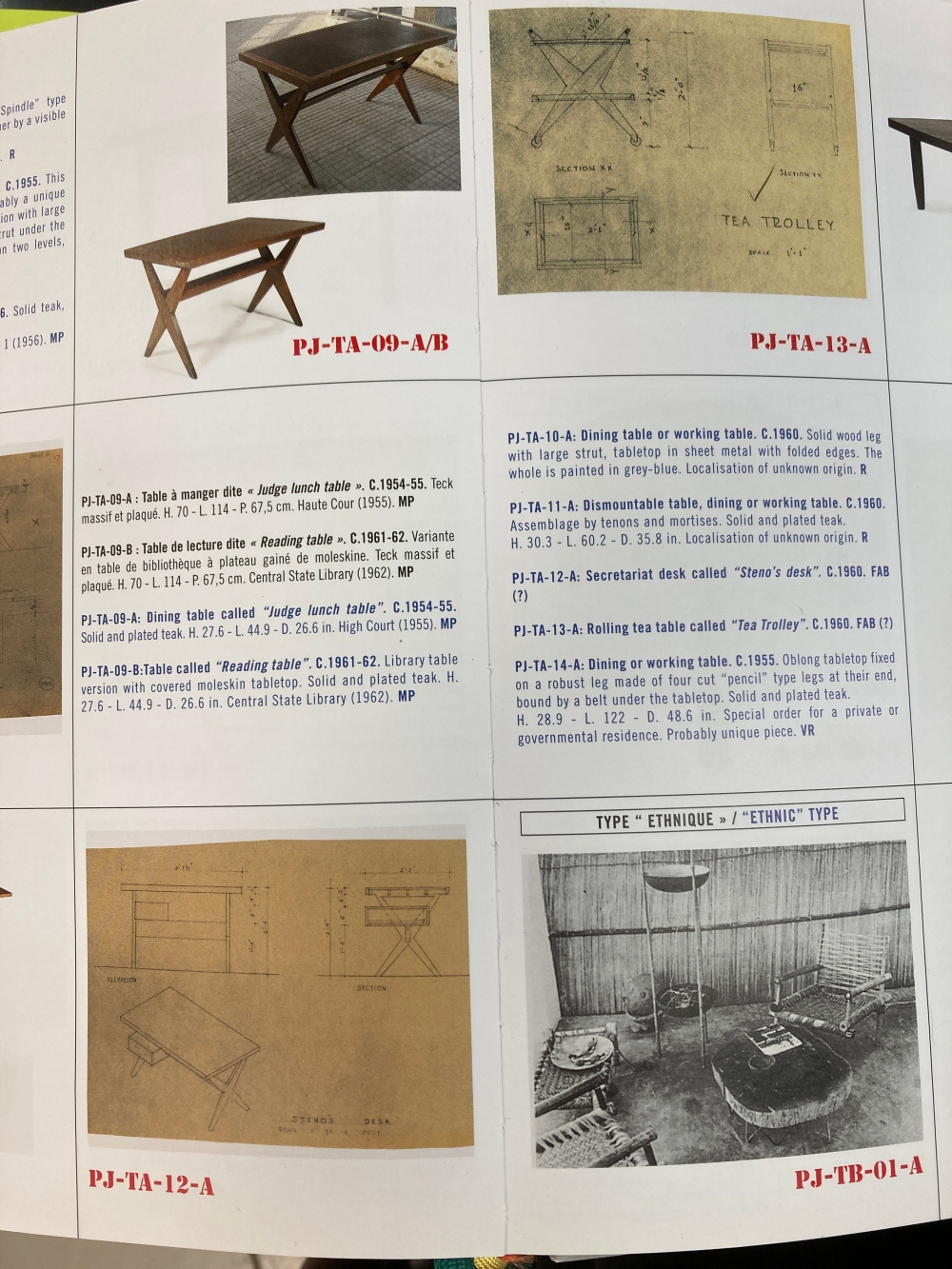Pierre Jeanneret (1896-1967)
Secretariat Desk, also known as Steno’s Desk
model PJ-TA-12-A, designed for the High Court in Chandigarh, India
36in (91.5cm) wide, 24in (61cm) deep, 28in (71.25cm) high
Constructed in teak with X legs, the desk has one drawer which slides into place on metal runners. One side of the table bears the stencilled mark P.U. Hostel (G) 30 which was intended to record the desk’s original location in the administrative buildings.
The original drawing for this design features in the catalogue raisonné: Le Corbusier/Pierre Jeanneret/The Indian Adventure by Eric Touchaleume and Gerald Moreau
In 1950, architect Charles Eduard Jeanneret, known as Le Corbusier, and his cousin Pierre were invited by the President Nehru and the republican government to present their vision for the city of Chandigarh, the capital of the Northern Punjab region. The aim was to create a utopian metropolis fit for the post-war world. While Le Corbusier visited the city only a few times following the signing off the project, Pierre Jeanneret remained on site to oversee its completion and design many of the fittings and interiors. In light of the enormous size of this project, which included many governmental and educational institutions, furniture had to be produced with great efficiency to meet the deadlines and demands. The result was a minimalist range of furniture which utilised local materials such as teak and rattan, which would last well in the Indian climate.
This desk is an authentic piece from Chandigarh.
SOLD
